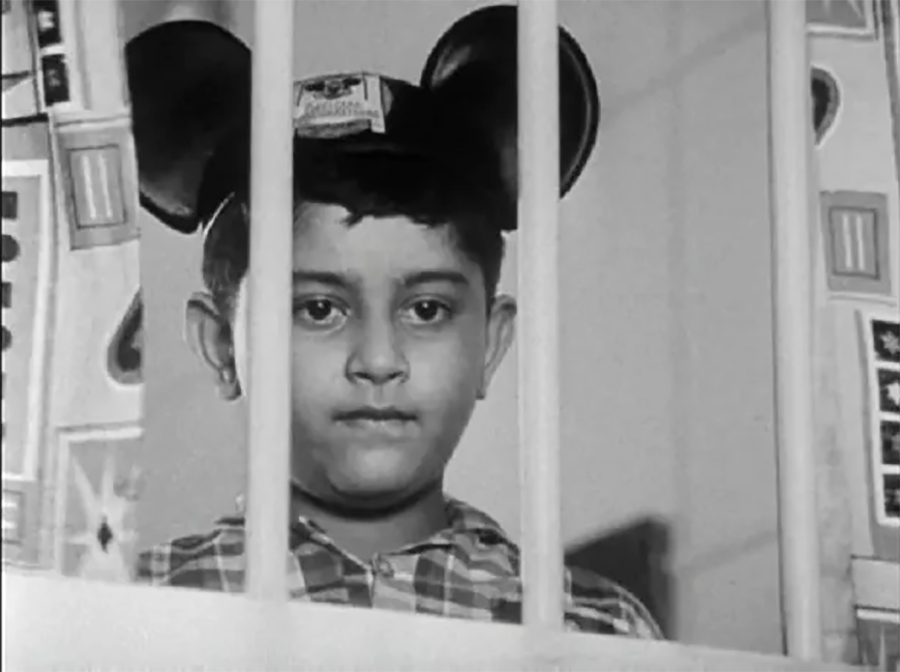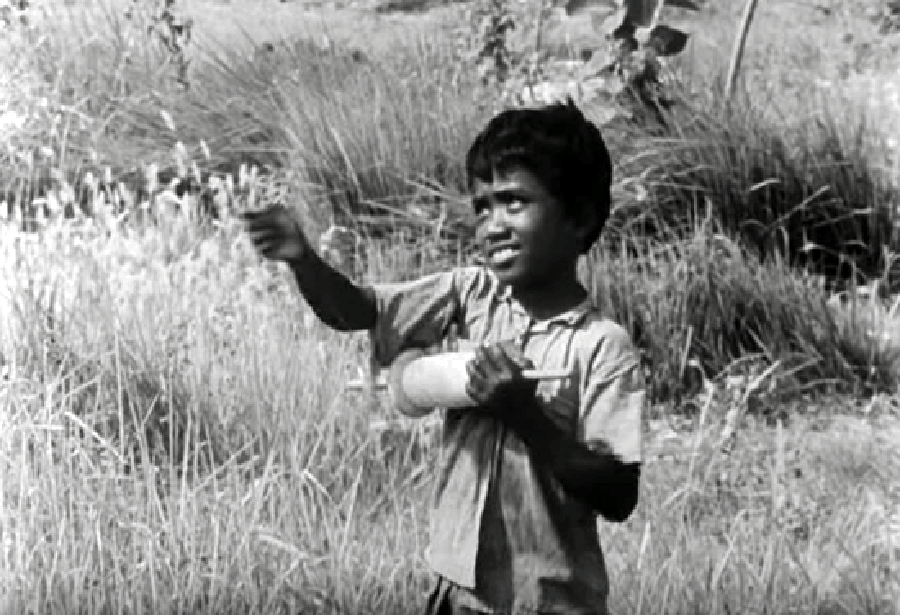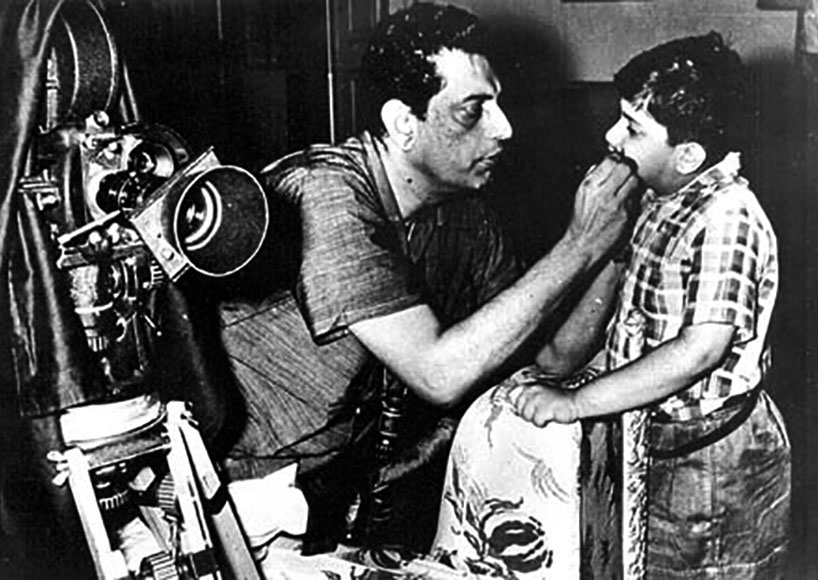Two
1964, India. 15 mins., B/W, no spoken language
Summary
In a fairy tale like treatment, the film shows an encounter of two boys – a rich kid living in big house and a boy living in a slum. The rich boy’s window overlooks the slum.
The film moves through the attempts at one-upmanship evident in their successive display of their toys. When the slum boy takes out a flute, the rich boy drowns its sound by his loud toy-trumpet; when the slum boy switches to a home-made mask and spear, the rich boy becomes a cowboy with a gun; when the slum boy tries to fly a humble kite, the rich boy shoots it down by his toy rifle… The slum boy gives up trying to be friends with the rich boy and the rich boy seems proud of his victory. Not for long, though…
Notes of the slum boy’s flute are heard again as the rich boys noisy toy-robot trips and breaks down. The film ends with the rich boy pondering over his unspoken defeat.
The film moves through the attempts at one-upmanship evident in their successive display of their toys. When the slum boy takes out a flute, the rich boy drowns its sound by his loud toy-trumpet; when the slum boy switches to a home-made mask and spear, the rich boy becomes a cowboy with a gun; when the slum boy tries to fly a humble kite, the rich boy shoots it down by his toy rifle… The slum boy gives up trying to be friends with the rich boy and the rich boy seems proud of his victory. Not for long, though…
Notes of the slum boy’s flute are heard again as the rich boys noisy toy-robot trips and breaks down. The film ends with the rich boy pondering over his unspoken defeat.
Comments
Two was made as part of a trilogy of short films from India that were commissioned by the US Public Television under the banner of Esso World Theater. The other two films featured Pandit Ravi Shankar and a ballet troupe from Bombay.
Ray was asked make a film in English in a Bengali setting. Not very happy with the prospect, he opted to do away with the spoken word. A great admirer of the silent cinema, Ray pays a tribute to the genre.
The film “packs quite a punch in its ten (actually 12) minutes”, Ray wrote to Marie Seton at the timing of making the film.
Ray was asked make a film in English in a Bengali setting. Not very happy with the prospect, he opted to do away with the spoken word. A great admirer of the silent cinema, Ray pays a tribute to the genre.
The film “packs quite a punch in its ten (actually 12) minutes”, Ray wrote to Marie Seton at the timing of making the film.
Credits | |
| Producer: | Esso World Theater |
| Original Screenplay & Direction: | Satyajit Ray |
| Cinematography: | Soumendu Roy |
| Editing: | Dulal Dutta |
| Art Direction: | Bansi Chandragupta |
| Sound: | Sujit Sarkar |
| Music: | Satyajit Ray |
Cast
Ravi Kiran and a street child



Two restored by Academy Awards
After Satyajit Ray was awarded an Honorary Academy Award in 1992, the Academy embarked on an ambitious endeavor to preserve the works of the Bengali filmmaker. “Two,” also known as “Parable of Two,” is part of the Academy’s Satyajit Ray Collection (http://www.oscars.org/film-archive/co…), which includes 18 feature films directed by Ray and preserved by the Archive.